 |
 |
 |
 |
| Knobs | ||||
Standard, no flare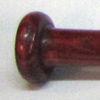 |
Standard, small flare |
Standard, med. flare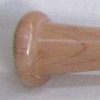 |
Standard, large flare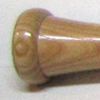 |
Acorn - Simple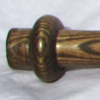 |
Acorn - Fancy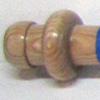 |
Ball End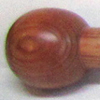 |
Beehive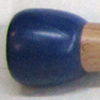 |
Civil War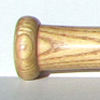 |
Comfort |
Mushroom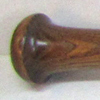 |
Pommel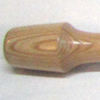 |
Royal Crown |
Spade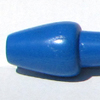 |
Taper |
| Common Turn Models | ||||
|
m110 The most balanced of the models. This has the thickest handle and long thin barrel. This makes a very easy to swing bat with a large sweet spot and great durability. The trade-off is less power. |
||||
|
c271 The most popular-selling bat of all time. This has a thick handle with a long cone barrel. It is easy to swing and has some pop because of the slight end-weight produced by the cone barrel. |
||||
|
p72 A very neutral bat. It has a medium handle and a medium barrel. It produces medium power with a medium weighted feel. The most comprimise between power and ease of swing. |
||||
|
t141 This is a fairly neutral bat, bordering on end-weight. It has a thin handle and medium barrel. This combination makes the bat lighter, but still has the mass in the barrel for power. |
||||
|
I13 This is a fairly neutral bat, bordering on end-weight. It has a medium handle, and a long medium barrel. This produces a sturdy bat with a large sweet spot. |
||||
|
c243 This is a truly end-weighted bat. It has a thin handle and large and long barrel. It has lots of power and a large sweet spot. The drawback is that its balance makes it difficult to swing. |
||||
|
m256 This is a truly end-weighted bat. It has a thick handle and a large and long barrel. This is a beast of a cut that makes a very heavy bat, and therefore used mostly with the lighter woods. |
||||
| Modern Handle Sizes | Vintage Handle Sizes | |||
| 7/8" | Thin | 1" | Thin | |
| 15/16" | Standard | 1-1/8" | Standard | |
| 1" | Thick | 1-1/4" | Thick | |
| Ends | ||||
Sawn flat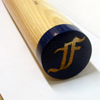 |
Beveled |
Rounded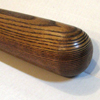 |
Cupped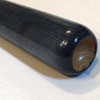 |
Chiseled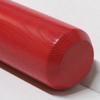 |
| Length and weight | ||||
|
What is "drop"? Weight is often represented by "drop" rather than the actual weight. The "drop" refers to the difference between the length (in inches) and the weight (in ounces). A 34" bat that weighs 31 oz. is said to be "drop 3" or (-3). What are common sizes? |
||||
| Here is a chart for determining a suggested bat length based on the hitter's height and weight. | ||||
|
|||||||||||||||||||||||||||||||||||||||||||||||||||||||||||||||||||||||||||||||||||||||||||||||||||||||||||||||||||||||||||||||||||||||||||||||||||||||||||||||||||||||||||||||
| Coloring: stain, dye, paint | |
| All bats are hand-colored with either stain, dye, or paint. Multiple colors or stripes can be achieved using tape. Full and half finishes are by far the most common decoration, but with taping, you are limited only by your imagination. Here are some examples of decorating styles | |
Natural |
Full |
Half-Dip handle |
Half-Dip barrel |
2-Tone |
Sweet Spot |
Stripes |
More Stripes |
Painted Grip |
Stained and Striped |
| Finishes | |
|
The most common finish is lacquer. It provides protection from
moisture and can add a glossy shine. Lacquer is also available
in satin and semi-gloss finishes. Satin is commonly used for
Vintage bats when you want to protect the wood, but have a more
natural non-shiny wood look. Wood can be left unfinished, but as a bat ages, the wood absorbs moisture then dries, which will eventually split the wood. Unprotected wood splits usually occur in the barrel, which is why it is becoming more common to seal the barrel and leave the handle unfinished, for those that prefer the feel of bare wood in their hands. Often, players apply pine tar to unfinished handles, which also acts as a moisture barrier. |
|
| Trademarks | |
|
The Cass River Lumber Co. logo can be applied with a variety of
techniques:
|
|
| Lettering | |
|
Lettering on the barrel is possible, but at this time we do not
offer laser or CNC mill engraving. The most common lettering
is done by hand with punches. Punches are pieces of steel
about the size of a crayon with letters in the end like typewriters.
Put the letter in place and tap it with a hammer. Because it's
done by hand, there will be some variation to the alignment and
spacing. Black ink is then used to offer a color contrast. Another option is the sticker; the same technique used for trademarks. The advantage is computer-printed lettering with a variety of letter style and sizes, even graphics. The drawback is the sticker itself. |
|
| Choosing a wood | |
|
Cass River Lumber Co. has 7 species of wood in stock. Ash and Hickory are open-grain woods. This adds flexibility to the swing, which is more forgiving when making contact outside the sweet spot. Hitting with the face-grain provides SLIGHTLY more power than hitting with the edge-grain, but greatly shortens the life of the bat. For this reason, it is preferable to hit with the edge-grain. Birch and Maple are closed-grain woods. These bats are more rigid. Some hitters feel this hits the ball harder off the sweet spot (science does not agree, but some hitters swear it does). Closed-grain wood is equally strong on the edge or face-grain. However, if a bat breaks from an edge-grain hit, it dangerously explodes into shards. Therefore, it is prefereable to hit on the face-grain. Science indicates is it simply the weight of the bat, not the hardness of the wood, that hits balls harder. Swing a heavier bat (at the same speed) and the ball will go farther. Coincidentally, hardness and heaviness go hand in hand. As wood gets harder, it also gets havier...so an expression of one, is also the expression of the other. Black Ash Green Ash White Ash Pignut Hickory Silver Maple Black Maple Paper Birch |
|